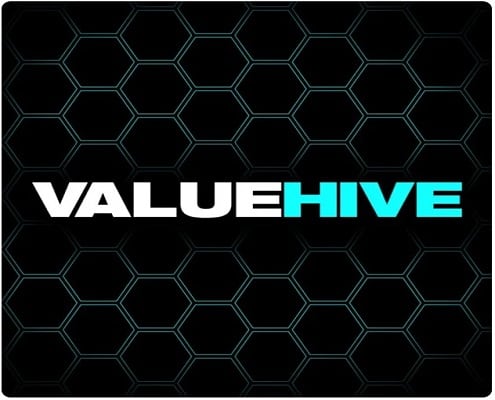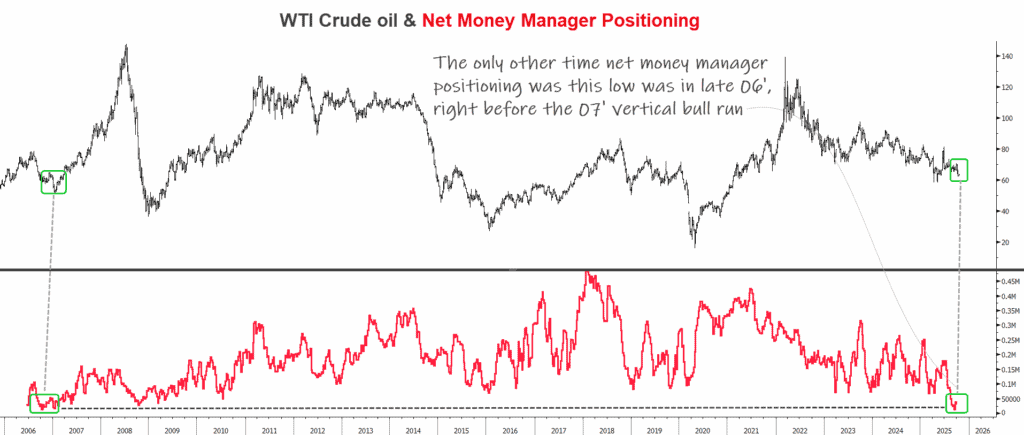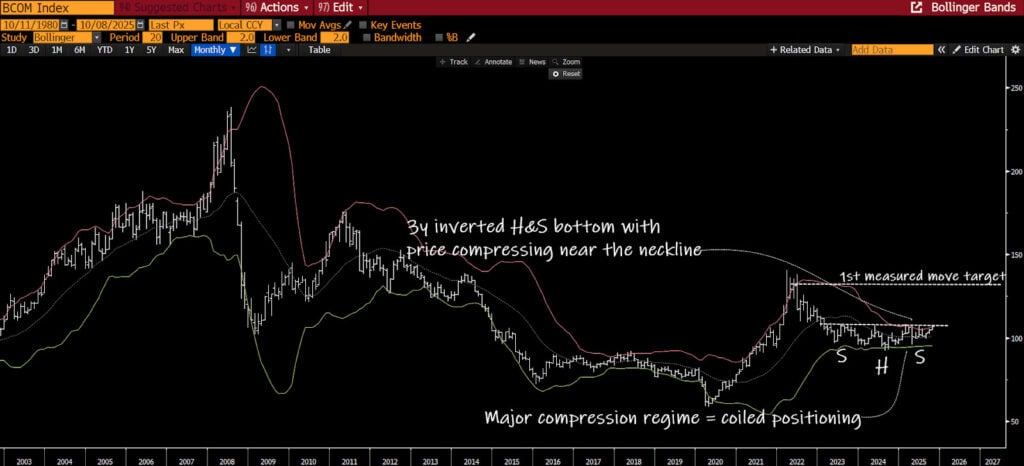“What we’re seeing in biotech is the equivalent of negative oil prices.”
Last week we introduced a new mini-essay series called “Value Hive: 3 Big Things” where we dissected my conversation with Matthew Sweeney (Laughing Water Capital). Read it here if you missed it.
3 Big Things distills all my podcast episodes into bite-sized mini-essays. Each piece features the following:
- One Conversation (Stocks, Psychology, Markets)
- One Framework (Mental Model, Analytical, Behavioral)
- One Idea (Long or Short)
We’ve got 130+ episodes to break down, and I can’t wait to share these pieces with you.
I’m stoked to recap my second podcast with Peter Mantas, GP of Logos LP. Peter focuses on biotech/life sciences investing and is my go-to source for everything in that space. Why should I (or you) listen to Peter? Logos LP has generated a 22.58% CAGR since its inception in March 2014.
You can listen to my first podcast with him here.
I had the pleasure of meeting Peter in Washington, DC, on Monday. He’s as impressive and smart in real life as he is on Twitter.
Alright, let’s dig in.
One Conversation: What is happening in Biotech/Life Sciences?
The biotech/life sciences industry is experiencing its most significant drawdown in history. Peter notes that “what we’re seeing is the equivalent of negative oil prices.”
Peter highlights a couple reasons for this drawdown. First, COVID completely shut down multiple drug trials, which rapidly reduced the terminal value of early-stage drug companies. Second, many early-stage drug companies IPO’d during the ARKK-driven momentum mania at ludicrous valuations.
This lead to a record number of biotech stocks trading below net cash. I asked Peter why these biotechs trade below net cash and if it presents a Ben Graham-like opportunity. Here’s his response (emphasis added):
“These companies are trading below cash for a couple of reasons. First, the delays in drug trials have substantially reduced terminal values as these companies race against patent clocks and FDA procedures. Every minute a drug isn’t going through the trial process accelerates its terminal value decay.
So that’s why the market is pricing these things below cash. The market says, ‘you now have 12-18 months left of cash before you go bankrupt.’ And a lot of that is due to COVID delays and lofty IPOs.”
That’s not to mention the myriad of COVID over-earners crowding the space with optically strong revenues, profits, and balance sheets. These companies eventually will mean revert and trade lower as they hurdle COVID comps.
However, Peter thinks the market is overreacting to a few things not currently priced in:
- Clinical trials opening-up
- COVID deceleration
- Number of compounds in Phase 1-3 trials
This is Peter’s “Second Wave” idea. The realization that some biotech companies are great businesses with strong balance sheets that aren’t merely COVID beneficiaries.
Next, let’s examine one of Peter’s favorite investing frameworks.
One Framework: Regulatory Tax & Toll Capture
One of Peter’s favorite ways to play the biotech/life sciences industry is through Regulatory Tax & Toll Capture (or RTTC).
Companies operating in RTTC are some of the best businesses in the world. Thanks to iron-clad customer lock-in (FDA regulation), they generate supernormal profits (costs are pennies, and they charge dollars).
Here’s how Peter explains the framework (emphasis added):
“Anything that touches human skin or touches the drug needs FDA regulation and approval. We’re talking about needles, syringes, cannulas, drug packing, delivery mechanisms, etc. Now, these approvals take years and cost millions of dollars.
However, these things (needles, syringes, cannulas, etc.) are such small costs for a drug company that there’s no incentive to switch providers. And if they were to switch providers, they’d need to re-apply with the FDA and start the approval process again. And nobody wants to do that because you’re up against the patent clock, and you’re burning cash.”
This stat will blow your mind. 90% of drug biologics pass through West Pharmaceuticals (WST) devices. In effect, WST is the gatekeeper for delivering drugs to people. That’s incredible RTTC.
WST effectively has an unmovable moat because no drug company wants to switch providers, and why would they? It’s insanely costly with little-if-any benefits from switching providers.
Here’s how you can apply it to your research process. Ask yourself, “Does this company help drug companies deliver, transport, or research new biologics?”
If it does, you’re looking in the RTTC space.
However, I’ll leave you with one warning. These companies rarely trade at quantitatively “cheap” valuations. For example, despite declining 36% YTD, WST trades at 7x NTM sales and 50x NTM FCF. Crazily enough, that could very well be the company’s valuation floor.
Alright, let’s dig into one of Peter’s favorite stock ideas.
One Idea: ClearPoint Neuro (CLPT)
CLPT is a neurological platform company that enables neurosurgeons to perform minimally invasive procedures under real-time MRI guidance. The company provides these solutions through its ClearPoint Neuro Navigation System, or CNNS.
CLPT allows doctors to see the entire “map” of the brain in real-time as they implant electrodes, perform biopsies, or trigger Deep Brain Stimulation (DBS). More importantly, CLPT allows doctors to see MRI scans in real-time, whether in the MRI room or the OR.
There are two segments to CLPT’s business: Functional Neurosurgery Navigation (FNN) and Biologics & Drug Delivery.
However, we’re most excited about CLPT’s Biologics & Drug Delivery business.
Why? Because CLPT has the chance to become the Toll Road for drug delivery straight to the brain. Here are Peter’s thoughts on the company (emphasis added):
“A therapy that can help the brain of a Parkinson’s Patient might also destroy a liver or a kidney. And if you deliver that Parkinson’s treatment orally or through the bloodstream, you risk that therapy damaging other organs on its journey towards the brain.
CLPT can do real-time guided delivery of gene therapy drugs directly into the brain. And if I can go right into the brain, then obviously that’s huge. Gene therapy costs are expensive, and once the delivery mechanism is FDA regulated … there’s your moat.”
The company currently sports a $246M market cap and trades at ~9x NTM EV/Sales with ~$38M in net cash on the balance sheet.
Wrapping Up: Where To Learn More
Thanks for reading, and I hope you learned something! Check out these resources if you want to learn more about Peter, Logos LP, and the Life Sciences/Biotech landscape:








